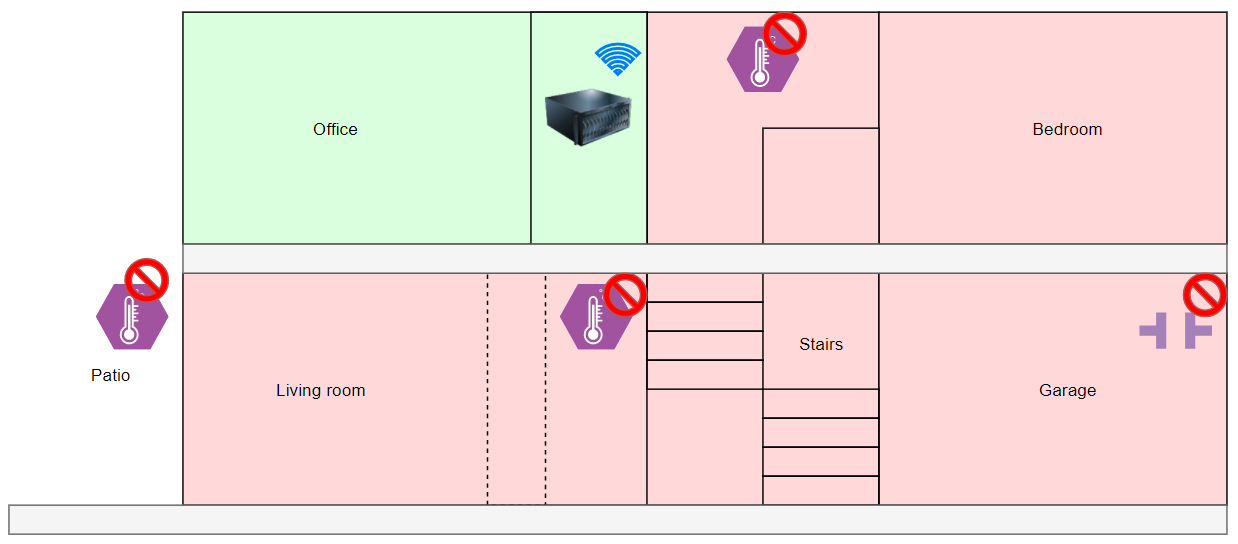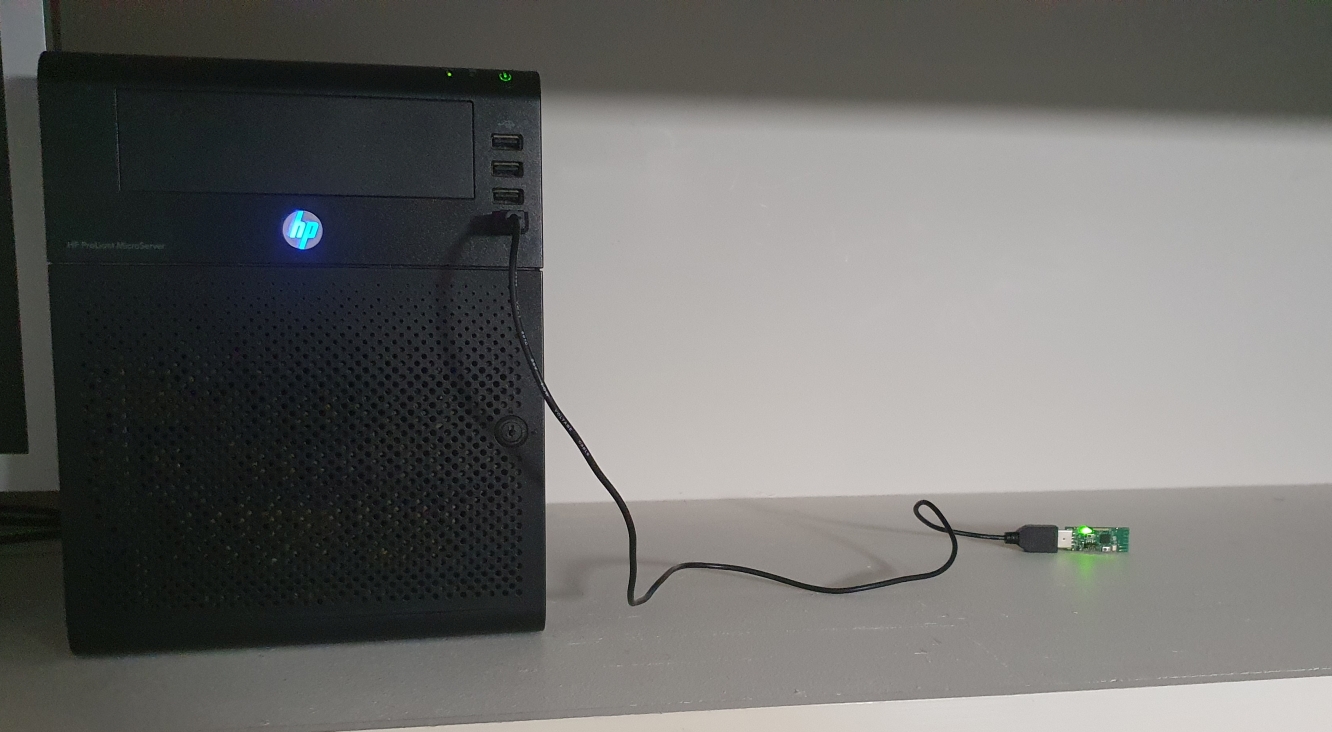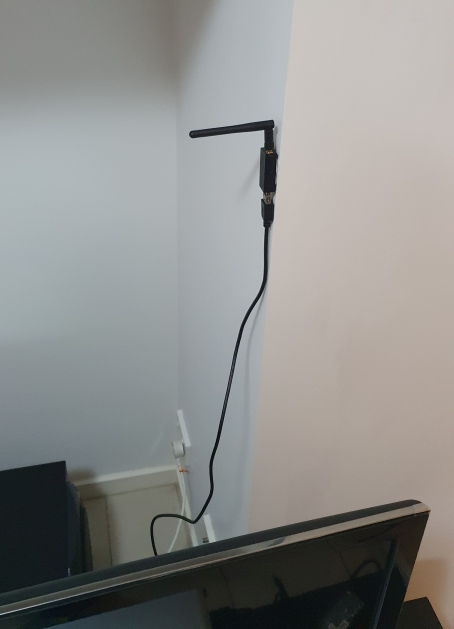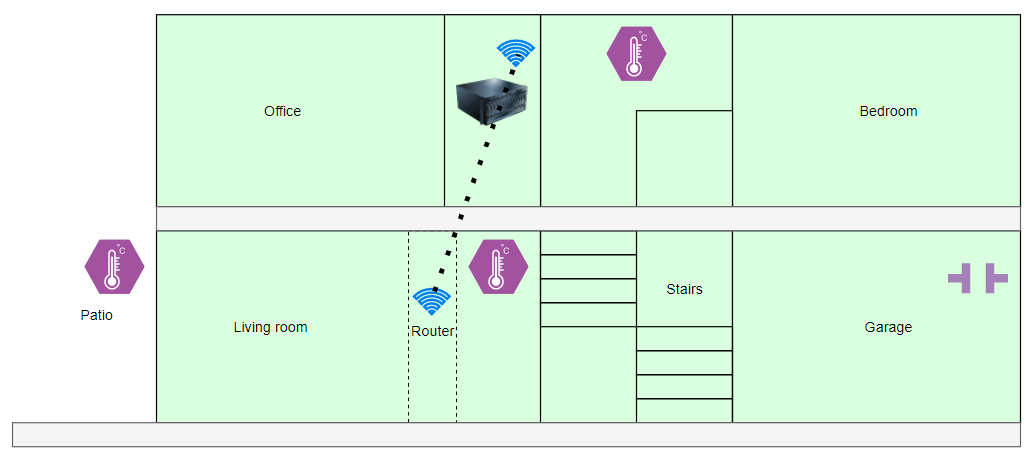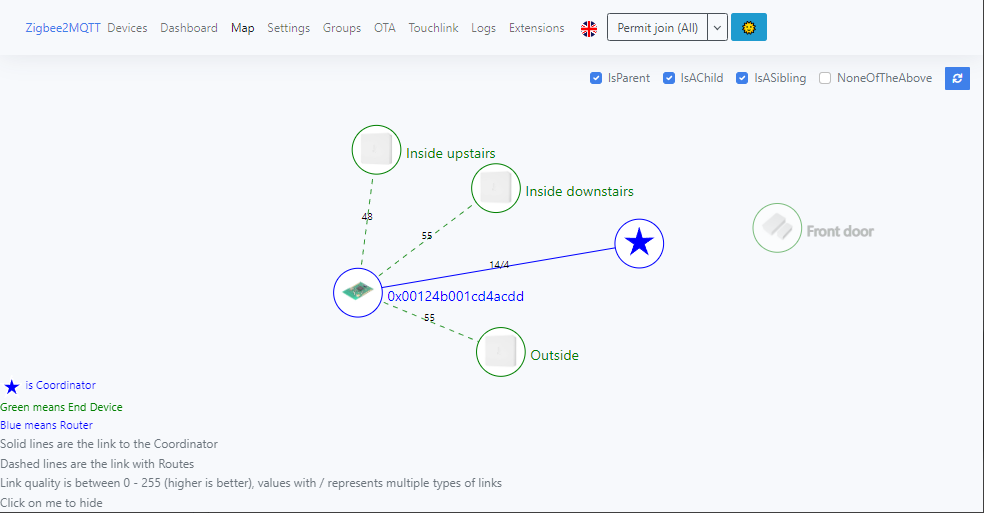The background
I've got a couple of Zigbee devices around my smart home:
- thermometer inside upstairs
- thermometer inside downstairs
- thermometer outside
- door sensor on the front door
- door sensor on the garage door
They all connect to my smart home network (Home Assistant) through a little CC2531 Zigbee network sniffer USB stick in my home server in my office. I use the software Zigbee2MQTT to join the Zigbee network to the rest of my smart home network.
The problem
The problem is that since I moved houses and into a townhouse, none of the sensors can connect to my smart home network unless they are inside my office.
The thermometer upstairs drops in and out of the network, but the ones downstairs can't connect at all.
I suspect this is because there's something in the floor, either something really thick like concrete or metal like pipes or wiring that's in just the wrong spot. I tested my theory using my Bluetooth headphones connected to my laptop in the office. The headphones went choppy and almost disconnected as soon as I went downstairs, and came right back when I went back upstairs.
The solution
After weeks of wondering what I could do, I was able to fix the problem and get them all talking to each other.
These articles by the Zigbee2MQTT project were very helpful in my mission:
- https://www.zigbee2mqtt.io/advanced/zigbee/02_improve_network_range_and_stability.html
- https://www.zigbee2mqtt.io/advanced/zigbee/05_create_a_cc2530_router.html
1. Moving the USB stick away from the computer
As it turns out, having the USB stick plugged right into my server was a mistake. Interference from the computer's electronics and the metal case was enough to impact reception.
This fix was easy: I put the Zigbee sniffer USB on a short USB extension lead (about 30cm) and moved it away from the server. The signal improvement was impressive!
2. Adding a router to the Zigbee network
Zigbee devices have this cool feature where they will automatically form a mesh network. If a device can't connect back to the Zigbee coordinator (the USB stick in my home server), then it'll automatically try to relay messages off of other Zigbee devices that act as routers. Typically, any Zigbee device that is powered by mains power will also act as a router (e.g. power switches, light bulbs).
Zigbee power switches are difficult to find for Australian power sockets.
Zigbee in-line power relays are no good, I'm in a rental and can't go making changes to mains wiring.
Zigbee lights are no good, I'd need to keep the lights turned on at the light switch at all times.
However, I had another spare CC2531 USB stick which had a case and an antenna. I've been using them as a Zigbee coordinator, but it looks like I can use them as routers as well. I could install it downstairs in the living room with a USB power charger, and use it to relay Zigbee traffic up to the coordinator upstairs.
One of these for $12.99 AUD.
https://www.ebay.com.au/itm/224741527257
Instead of flashing the usual coordinator firmware onto the USB stick:
https://github.com/Koenkk/Z-Stack-firmware/tree/master/coordinator/Z-Stack_Home_1.2
I flashed the router firmware instead:
https://github.com/Koenkk/Z-Stack-firmware/tree/master/router/Z-Stack_Home_1.2
Note: After flashing the router firmware, I didn't hear the "ding diddl-ing" noise from Windows whenever I plug it into my computer. I think that's because this version of the firmware doesn't enable USB on the stick because USB data isn't needed, just the USB power.
I installed the router behind the TV in the living room using Bluetac to stick it to the wall roughly straight down underneath the server upstairs. I powered it through a spare USB phone charger.
The result
BAM! Adding a router downstairs and moving the USB stick away from the computer worked a treat! All of a sudden, everything was connecting back to my home network.
Success!
Zigbee2MQTT shows a map of how things are connecting back to the coordinator which I thought was cool.


